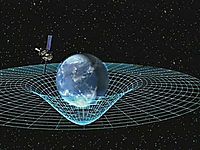
Photo from wikipedia
Research summary: When describing the future, executives draw analogies between time and space (“we are on the right path,” “the deadline is approaching”). These analogies shape how executives construe the… Click to show full abstract
Research summary: When describing the future, executives draw analogies between time and space (“we are on the right path,” “the deadline is approaching”). These analogies shape how executives construe the future and influence attitudes to action with long‐term benefits but short‐term costs. Ego‐moving frames (“we are approaching the future”) prompt a focus on the present, whereas time‐moving frames (“the future is approaching”) underscore the advent of the future as inevitable. Ultimately, action that prioritizes long‐term returns depends both on how executives conceive of the future and whether they believe they can engender favorable outcomes. This balance between recognizing the inevitability of the future (time‐moving frame) and the capacity to shape outcomes (control beliefs) stands in contrast to the more agentic forms of discourse that are dominant in strategy. Managerial summary: Executives often prioritize maximizing immediate returns over investing to build a long‐term competitive advantage. How they think about the future offers one explanation for this short‐termism. This article distinguishes two ways of framing the future with implications for decision‐making. Are we approaching the future (the ego‐moving frame) or is it approaching us (the time‐moving frame)? As long as executives have confidence in their ability to achieve forecasted results, they focus on long‐term returns in their decision‐making when they recognize the advent of the future as inevitable (the time‐moving frame). In contrast, though executives use the ego‐moving frame to show that they are active agents, they weigh future returns less heavily when framing the future in this way. Copyright © 2017 John Wiley & Sons, Ltd.
Journal Title: Southern Medical Journal
Year Published: 2017
Link to full text (if available)
Share on Social Media: Sign Up to like & get
recommendations!